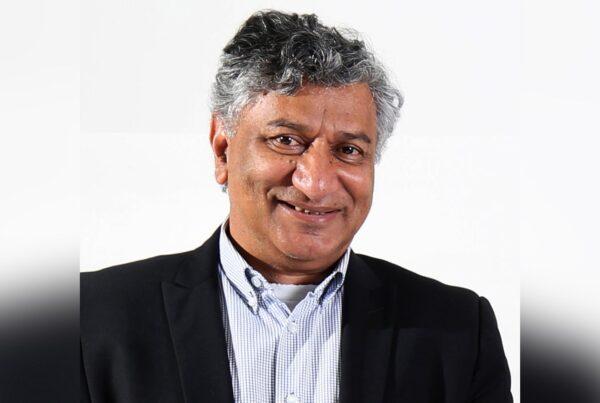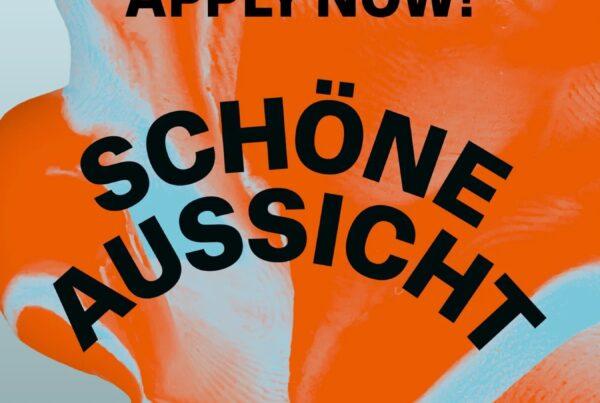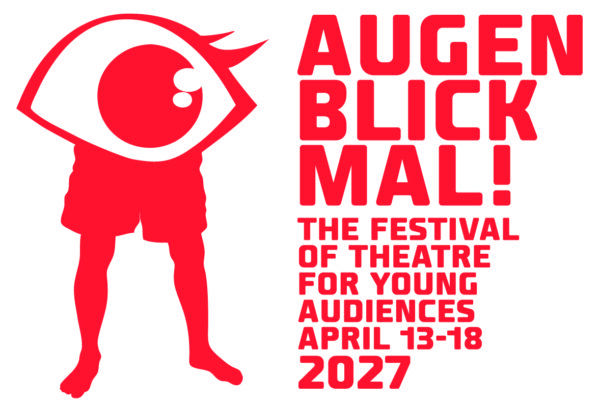Poetic and political dimensions of sign language plays for children
by Jayne Batzofin
*It is important to note that this article purposefully makes use of the ‘uppercase D’ Deaf, to describe people who identify as culturally Deaf and use sign language as their predominant means of communication. ‘Lower case d’ deaf, refers to deafness when viewed as a medical condition/ disability.
At the very beginning of my theatre studies and early theatre career as a director and stage & costume designer, I was inspired by physical and visual theatre – a theatre that relied on the body and aesthetic design choices to communicate its meaning. I was vehemently opposed to using spoken text, finding it extraneous and clunky. I was obsessed with the visual and physical details and nuances of performance, constantly striving to go beyond language to create a phenomenological experience. So, I was beyond thrilled when I was invited to be a part of the critically acclaimed South African integrated visual theatre company FTH: K (From the Hip: Khulumakahle). This integrated company worked with Deaf and hearing artists to create highly visual, non-verbal theatre for both Deaf and hearing audiences to enjoy. I packed my bags, moved down to Cape Town and was enrolled in an accredited South African Sign Language (SASL) course. Under the direction of Artistic Director, Rob Murray, the focus of the theatre productions were aimed at audiences 16 years +, with a strong emphasis on mask and puppet work. Their productions played in professional theatres, at national festivals, internationally and toured to Deaf schools around South Africa.
When you tour to many Deaf schools over numerous years, you start to become acutely aware of the disparity, continual adversity and often dire consequences of an education and societal system failing its Deaf children. I was often shocked when I attended these schools and signed to the teachers, and they looked at me panicked, unable to sign. You see, our education system places certified teachers into schools, they don’t take into account that those teachers can actually communicate with the students in their first language. This is compounded by the fact, that many Deaf children are born to hearing parents… so where do the majority of Deaf children acquire their language from? Numerous studies and research have spoken to the immense importance of language acquisition development before the age of 5 years. And interestingly, language acquisition happens largely in a passive capacity; children watching television programmes, hearing strangers or their guardians speaking around them, listening to the radio etc. However, for a Deaf child raised in a hearing household where no SASL is present, the child is starved of their language. They then attend school, and if they are lucky they will have a teacher who signs, and this will be the way they acquire language, strictly in a classroom setting and most certainly over the age of 4.
I vividly recall on one tour in 2012, we were staying over on the school premises at Thiboloha School for the Deaf and Blind in Qwaqwa. A superb school, in a rather remote part of South Africa, that had teachers who could sign. I asked if I could watch one of their classes for their Foundation Phase learners (roughly 4 -7 years). I remember sitting there being entirely mesmerised by their tiny hands trying to grasp their language in the space around them. They were learning the alphabet… umbrella… xylophone… zip. It was in that classroom that my theatre practice forever changed, I no longer wanted to make non-verbal theatre, I wanted to make theatre in SASL. I wanted these amazing children to have a secondary, entertaining way of passively acquiring their language outside of the classroom.
After this realisation, I shifted my focus as a director from adults to young audiences. I was awarded an incredible opportunity through ASSITEJ South Africa and ASSITEJ Denmark, the Inspiring a Generation Programme, a 3-week exchange programme, where selected South African theatre makers went to Denmark to learn about theatre for children and youths. Part of the exchange included attending the world-renowned April Festival (one of the largest theatre festivals for children and youths). The festival was a frenzy of running from one show to the next, hurried meals over meeting wonderful new people, late nights and early starts. But my overall memory was one of wonderment, soaking in all these works for children and youths, the likes I had never seen before. In fact, some of the shows I witnessed in that festival have been forever ingrained in my mind and remain present to this day when I devise any new work. After that life-changing experience, coupled with my personal desire to make work in SASL for Deaf children, I devised my first professional work for young audiences, ‘What goes UP…’.
Before getting started, I extensively read up on the ethics of working and researching with young children. I knew I wanted to work directly with children, wanting to understand how they absorbed their surroundings, how they engaged with their world. This ethical research practice resulted in spending two weeks with a selected group of children in Foundation Phase, providing an extended time for the children to familiarise themselves with me, to start to recognise and trust me in their space. I sat with them in class, just watching how they behaved, particularly when they were learning new material. After the first few days of being a novelty to the children, I soon became part of the furniture, and it was easier to watch the children settle into their rhythms and behaviours, as they trusted having me in their space. After these two weeks of familiarisation, I started to hold play sessions with the children, bringing a random assortment of objects into class and allowing a space for free play. My favourite free play session, resulted in 45 minutes of the children solely playing with feathers, blowing them up and watching them fall, they were entranced by the feathers rising and gently falling. This class gave me the idea for the play and the title of the show ‘What goes UP…’ (based on the English saying, what goes up must come down). I then took this wealth of observation and transposed it onto the rehearsal floor with professional artists. We developed the work over 4 weeks, always taking the material back to the children, to gauge how they would receive it; both the themes of the play, but also the textures of costume, seating, and props etc. It was a very interesting process in trying to balance the knowledge I had as an experienced theatre maker, of what worked on stage, vs what the children interpreted and what they responded to. However, the children’s say was always the final say. The only material I did not take back to the children was the SASL text. The script I developed on the side with the assistance of a professional SASL interpreter. It was poetic and slightly more advanced than the children’s comprehension level because the purpose of using SASL was not to teach the children SASL or test their comprehension abilities, but to have them passively engage with their language through a source of entertainment.
After this development phase we then toured the show for a month around South Africa to different Deaf schools and my best memory was when we were to perform for the youngest children in Foundation Phase. A concerned teacher came to us before the children arrived, ‘they won’t understand the sign language in the play, it’s too advanced’. I gently and politely smiled at her knowing that, while she was correct, it was not about understanding but rather about the value of just witnessing their mother tongue language in a different context that was important. In that performance, as we signed… all of a sudden, unprompted, a wave of small hands found themselves in the air mimicking our signs. This happened each time we signed, a wave of small hands would rise, copying the motions, tracing out the handshapes in the air. Even though the children didn’t know what we were saying, they were clearly engaging with their language in these moments. Remarkably, after any of our performances, we always had children rushing towards us asking “are you Deaf?” “No, we are hearing”, we would sign back, and their faces would have this look of utter delight and confusion, trying to comprehend that a hearing person, who was not their teacher, could fluently sign and communicate with them. I often think, perhaps this aspect was more impressionable to the children than watching the play was.
While of course I have been speaking to the specificity of making work in SASL for Deaf children, I think this conversation can easily be applied to the importance of making work for any children whose mother tongue language is viewed as a minority language. While there are indeed many values of non-verbal theatre, and it is a wonderous accessible medium, it should not be the only theatre that children who speak minority languages have access to. Children deserve to see themselves represented on stage, and often language is a great part of cultural identity. While every theatre maker may not be political, there are constantly politics present on stage in the way we choose to represent or under-represent our audiences. I am overtly aware of these politics, and therefore my dramaturgy always questions the means and modes of representation, whether it be gender, sexual identity, race or inclusion. My involvement and commitment to the Deaf community does not solely happen on stage, as I often find myself taking the time to gently explain to hearing people, that there is more than one sign language in the world, the difference between uppercase and lowercase Deaf/deaf*, that Deafness isn’t a disability, etc. My personal politics for inclusion rights advocacy is deeply entrenched in my personal and professional theatre practice.
When I look back at my younger theatre making self, who detested the use of text, I can’t help but quietly chuckle at myself. I still am very much obsessed with using visual and body language in my works, and if anything I am leaning more and more towards dance. But I now have a profound appreciation for the power of using language on stage, not as a narrative devise, but as a tool for social development and integration. And I shall forever be grateful for attending that classroom of tiny hands discovering their language, so I could discover how I can use my theatrical language to find purpose in this world.





